Chemistry, An Introduction to General, Organic, and Biological Chemistry Plus MasteringChemistry with eText -- Access Car
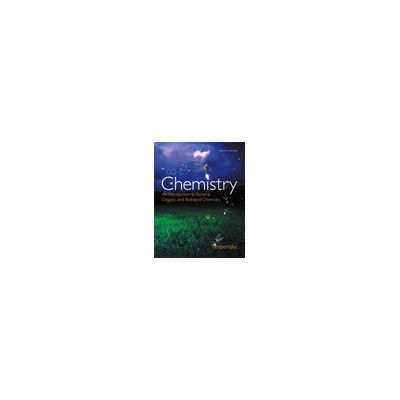
Price: 840,00 lei
Availability: in supplier's stock
Author: Karen Timberlake
ISBN: 9780321907141
Publisher: Pearson Education
Publishing Year: 2014
Edition: 12
Pages: 744
Category: BIOCHEMISTRY
DESCRIPTION
NEW! The Pearson eText enhanced with media is designed to improve student engagement and knowledge retention. The first of its kind for the course, the enhanced eText includes interactive animations, videos, and sample calculations that are optimized for digital access via PC, mobile phone, and iPad.
NEW! Interactive videos clarify and reinforce important concepts. These videos are linked from green play-button icons in the margins throughout the eText, so opportunities to further explore concepts are just a click away. Sample Calculations walk students through the most challenging chemistry problems and provide a fresh perspective on how to approach individual problems and reach their solutions. Live Video Demonstrations help students through some of the more challenging topics by showing how chemistry works in real life and introducing a bit of humor into scientific experimentation. Topics include Using Conversion Factors, Balancing Nuclear Equations, and Chemical v. Physical Change.
NEW! Dynamic Study Modules on Core GOB Chemistry Concepts, Calculations, and Math Skills offer personalized guidance through essential material required for the course and enable practice where each student needs it most.
NEW! Problem Solving in Allied Health tutorials reinforce connections presented by Karen Timberlake in the text and the MasteringChemistry program that help students develop the problem-solving skills needed to succeed in the course and in their future allied health careers.
Pause and Predict video quizzes bring chemistry to life with lab demonstrations illustrating key topics. Students are asked to predict the outcome of experiments as they watch the videos. A set of multiple-choice questions challenges students to apply the concepts from the video to related scenarios.
Concept Map quizzes help students make key connections via drag-and-drop applets and related multiple-choice assessment questions. New Construct a Concept Map problems guide students through the creation of concept maps, providing wrong-answer feedback that helps clarify the links they propose between concepts.
NEW! The Chemistry Drawing Tool allows students to draw a diverse range of structures and reaction mechanisms inherent to organic chemistry with ease.
Math remediation options in MasteringChemistry enable students to brush up on required quantitative skills. The mathematics review chapter contains practice tutorials covering key math topics in the course. A new math remediation quiz provides a comprehensive set of review questions with links to additional algorithmically generated practice problems in mathXL.
End-of-chapter questions and problems from the text can easily be assigned within MasteringChemistry, with more algorithmic and randomized problems than ever before.
Chapter-specific reading quizzes and activities focus on important, hard-to-grasp chemistry concepts. Icons throughout the textbook direct students to specific lessons related to the topics discussed in a given section. These are suggested for pre-lecture preparation or homework.
Show the relevance of chemistry through real-world examples
NEW! Chapter-opening profiles show students how professionals working in diverse careers–such as nursing, physical therapy, dentistry, agriculture, and food science–use chemistry every day. These engaging articles draw students into each chapter while helping them understand the applications of chemistry to a variety of future professions.
Explore Your World hands-on activities encourage students to explore selected chemistry topics using everyday materials, making chemistry exciting, relevant, and non-threatening.
Chemistry Links to Health and Environment throughout the text relate chemistry concepts to real-life topics in health, the environment, and medicine that interest students.
Foster development of problem-solving skills
Visually engaging Guides to Problem Solving (GPS) walk students through each problem-solving strategy using unique color-coded flow charts that are coordinated with parallel solutions of worked examples. These step-by-step guides help students master all the important quantitative problem types.
Analyze the Problem features are now included in the solutions to the Sample Problems to strengthen critical-thinking skills and to help students break down word problems into the components required to solve them.
Integrated math remediation includes new Key Math Skills that review relevant basic math operations. A Key Math Skill Review at the end of each chapter summarizes what was presented in the chapter and provides additional examples.
NEW! Core Chemistry Skills identify the key chemical principles in each chapter that are required to successfully learn chemistry. A new Core Chemistry Skill Review at the end of each chapter reinforces the material and helps students study.
NEW! Chapter Readiness sections at the beginning of each chapter list the Key Math Skills and Core Chemistry Skills from the previous chapters, which provide the foundation for new chemistry principles in the current chapter.
Numerous Sample Problems in each chapter demonstrate the application of each new concept to problem solving. The worked-out solutions give step-by-step explanations, provide a problem-solving model, and illustrate required calculations. Each sample problem is followed by a study check question, the answer for which is given at the end of the chapter.
Questions and Problems at the close of each section allow students to apply problem-solving techniques to each concept just discussed.
Help students visualize and understand concepts
NEW! The twelfth edition has been thoroughly updated to reflect the latest conventions in the discipline and to provide a better teaching and learning experience.
• Coverage of organic chemistry topics has been streamlined.
• Coverage of biochemistry has been integrated earlier in the text when appropriate allowing students to see how the general chemistry they are learning relates to biological systems and health immediately.
• Additional health-related problems have been integrated throughout.
• Additional content–including coverage of radioactivity, significant figures, Avogadro’s number, conversion guides, and the scientific method–has ben included in response to comments from instructors.
Macro-to-micro art illustrations enable students to make connections between recognizable objects and their atomic-level representations, helping them to visualize chemistry in everyday life.
Revised Concept Maps at the end of select chapters provide a big-picture overview of concepts presented in the chapter and help students understand how these concepts connect to one another.
Understanding the Concepts features provide visual representations that help students build an understanding of newly learned chemical concepts. They include questions that test students’ understanding of the basic ideas of chemistry rather than just their math skills in working quantitative problems.
1. Chemistry in Our Lives
1.1 Chemistry and Chemicals
1.2 Scientific Method: Thinking Like a Scientist
1.3 Learning Chemistry: A Study Plan
1.4 Key Math Skills for Chemistry
2. Chemistry and Measurements
2.1 Units of Measurement
2.2 Measured Numbers and Significant Figures
2.3 Significant Figures in Calculations
2.4 Prefixes and Equalities
2.5 Writing Conversion Factors
2.6 Problem Solving Using Unit Conversion
2.7 Density
3. Matter and Energy
3.1 Classification of Matter
3.2 States and Properties of Matter
3.3 Temperature
3.4 Energy
3.5 Energy and Nutrition
3.6 Specific Heat
3.7 Changes of State
4. Atoms and Elements
4.1 Elements and Symbols
4.2 The Periodic Table
4.3 The Atom
4.4 Atomic Number and Mass Number
4.5 Isotopes and Atomic Mass
4.6 Electron Energy Levels
4.7 Trends in Periodic Properties
5. Nuclear Chemistry
5.1 Natural Radioactivity
5.2 Nuclear Reactions
5.3 Radiation Measurement
5.4 Half-Life of a Radioisotope
5.5 Medical Applications Using Radioactivity
5.6 Nuclear Fission and Fusion
6. Ionic and Molecular Compounds
6.1 Ions: Transfer of Electrons
6.2 Writing Formulas for Ionic Compounds
6.3 Naming Ionic Compounds
6.4 Polyatomic Ions
6.6 Electronegativity and Bond Polarity
6.7 Shapes and Polarity of Molecules
6.8 Attractive Forces in Compounds
7. Chemical Quantities and Reactions
7.1 The Mole
7.2 Molar Mass and Calculations
7.3 Equations for Chemical Reactions
7.4 Types of Reactions
7.5 Oxidation—Reduction Reactions
7.6 Mole Relationships in Chemical Equations
7.7 Mass Calculations for Reactions
7.8 Energy in Chemical Reactions
8. Gases
8.1 Properties of Gases
8.2 Pressure and Volume (Boyle’s Law)
8.3 Temperature and Volume (Charles’s Law)
8.4 Temperature and Pressure (Gay-Lussac’s Law)
8.5 The Combined Gas Law
8.6 Volume and Moles (Avogadro’s Law)
8.7 Partial Pressures (Dalton’s Law)
9. Solutions
9.1 Solutions
9.2 Electrolytes and Nonelectrolytes
9.3 Solubility
9.4 Concentrations of Solutions
9.5 Dilution of Solutions
9.6 Properties of Solutions
10. Acids and Bases and Equilibrium
10.1 Acids and Bases
10.2 Strengths of Acids and Bases
10.3 Acid—Base Equilibrium
10.4 Ionization of Water
10.5 The pH Scale
10.6 Reactions of Acids and Bases
10.7 Buffers
11. Introduction to Organic Chemistry: Hydrocarbons
11.1 Organic Compounds
11.2 Alkanes
11.3 Alkanes with Substituents
11.4 Properties of Alkanes
11.5 Alkenes and Alkynes
11.6 Cis—Trans Isomers
11.7 Addition Reactions
12. Alcohols, Thiols, Ethers, Aldehydes, and Ketones
12.1 Alcohols, Phenols, Thiols, and Ethers
12.2 Properties of Alcohols
12.3 Aldehydes and Ketones
12.4 Reactions of Alcohols, Thiols, Aldehydes, and Ketones
13. Carbohydrates
13.1 Carbohydrates
13.2 Chiral Molecules
13.3 Fischer Projections of Monosaccharides
13.4 Haworth Structures of Monosaccharides
13.5 Chemical Properties of Monosaccharides
13.6 Disaccharides
13.7 Polysaccharides
14. Carboxylic Acids, Esters, Amines, and Amides
14.1 Carboxylic Acids
14.2 Properties of Carboxylic Acids
14.3 Esters
14.4 Hydrolysis of Esters
14.5 Amines
14.6 Amides
15. Lipids
15.1 Lipids
15.2 Fatty Acids
15.3 Waxes and Triacylglycerols
15.4 Chemical Properties of Triacylglycerols
15.5 Phospholipids
15.6 Steroids: Cholesterol, Bile Salts, and Steroid Hormones
15.7 Cell Membranes
16. Amino Acids, Proteins, and Enzymes
16.1 Proteins and Amino Acids
16.2 Amino Acids as Acids and Bases
16.3 Proteins: Primary Structure
16.4 Proteins: Secondary, Tertiary, and Quaternary Structures
16.5 Enzymes
16.6 Factors Affecting Enzyme Activity
17. Nucleic Acids and Protein Synthesis
17.1 Components of Nucleic Acids
17.2 Primary Structure of Nucleic Acids
17.3 DNA Double Helix
17.4 RNA and the Genetic Code
17.5 Protein Synthesis
17.6 Genetic Mutations
17.7 Viruses
18. Metabolic Pathways and Energy Production
18.1 Metabolism and ATP Energy
18.2 Digestion of Foods
18.3 Coenzymes in Metabolic Pathways
18.4 Glycolysis: Oxidation of Glucose
18.5 The Citric Acid Cycle
18.6 Electron Transport and Oxidative Phosphorylation
18.7 Oxidation of Fatty Acids
18.8 Degradation of Amino Acids
NEW! Interactive videos clarify and reinforce important concepts. These videos are linked from green play-button icons in the margins throughout the eText, so opportunities to further explore concepts are just a click away. Sample Calculations walk students through the most challenging chemistry problems and provide a fresh perspective on how to approach individual problems and reach their solutions. Live Video Demonstrations help students through some of the more challenging topics by showing how chemistry works in real life and introducing a bit of humor into scientific experimentation. Topics include Using Conversion Factors, Balancing Nuclear Equations, and Chemical v. Physical Change.
NEW! Dynamic Study Modules on Core GOB Chemistry Concepts, Calculations, and Math Skills offer personalized guidance through essential material required for the course and enable practice where each student needs it most.
NEW! Problem Solving in Allied Health tutorials reinforce connections presented by Karen Timberlake in the text and the MasteringChemistry program that help students develop the problem-solving skills needed to succeed in the course and in their future allied health careers.
Pause and Predict video quizzes bring chemistry to life with lab demonstrations illustrating key topics. Students are asked to predict the outcome of experiments as they watch the videos. A set of multiple-choice questions challenges students to apply the concepts from the video to related scenarios.
Concept Map quizzes help students make key connections via drag-and-drop applets and related multiple-choice assessment questions. New Construct a Concept Map problems guide students through the creation of concept maps, providing wrong-answer feedback that helps clarify the links they propose between concepts.
NEW! The Chemistry Drawing Tool allows students to draw a diverse range of structures and reaction mechanisms inherent to organic chemistry with ease.
Math remediation options in MasteringChemistry enable students to brush up on required quantitative skills. The mathematics review chapter contains practice tutorials covering key math topics in the course. A new math remediation quiz provides a comprehensive set of review questions with links to additional algorithmically generated practice problems in mathXL.
End-of-chapter questions and problems from the text can easily be assigned within MasteringChemistry, with more algorithmic and randomized problems than ever before.
Chapter-specific reading quizzes and activities focus on important, hard-to-grasp chemistry concepts. Icons throughout the textbook direct students to specific lessons related to the topics discussed in a given section. These are suggested for pre-lecture preparation or homework.
Show the relevance of chemistry through real-world examples
NEW! Chapter-opening profiles show students how professionals working in diverse careers–such as nursing, physical therapy, dentistry, agriculture, and food science–use chemistry every day. These engaging articles draw students into each chapter while helping them understand the applications of chemistry to a variety of future professions.
Explore Your World hands-on activities encourage students to explore selected chemistry topics using everyday materials, making chemistry exciting, relevant, and non-threatening.
Chemistry Links to Health and Environment throughout the text relate chemistry concepts to real-life topics in health, the environment, and medicine that interest students.
Foster development of problem-solving skills
Visually engaging Guides to Problem Solving (GPS) walk students through each problem-solving strategy using unique color-coded flow charts that are coordinated with parallel solutions of worked examples. These step-by-step guides help students master all the important quantitative problem types.
Analyze the Problem features are now included in the solutions to the Sample Problems to strengthen critical-thinking skills and to help students break down word problems into the components required to solve them.
Integrated math remediation includes new Key Math Skills that review relevant basic math operations. A Key Math Skill Review at the end of each chapter summarizes what was presented in the chapter and provides additional examples.
NEW! Core Chemistry Skills identify the key chemical principles in each chapter that are required to successfully learn chemistry. A new Core Chemistry Skill Review at the end of each chapter reinforces the material and helps students study.
NEW! Chapter Readiness sections at the beginning of each chapter list the Key Math Skills and Core Chemistry Skills from the previous chapters, which provide the foundation for new chemistry principles in the current chapter.
Numerous Sample Problems in each chapter demonstrate the application of each new concept to problem solving. The worked-out solutions give step-by-step explanations, provide a problem-solving model, and illustrate required calculations. Each sample problem is followed by a study check question, the answer for which is given at the end of the chapter.
Questions and Problems at the close of each section allow students to apply problem-solving techniques to each concept just discussed.
Help students visualize and understand concepts
NEW! The twelfth edition has been thoroughly updated to reflect the latest conventions in the discipline and to provide a better teaching and learning experience.
• Coverage of organic chemistry topics has been streamlined.
• Coverage of biochemistry has been integrated earlier in the text when appropriate allowing students to see how the general chemistry they are learning relates to biological systems and health immediately.
• Additional health-related problems have been integrated throughout.
• Additional content–including coverage of radioactivity, significant figures, Avogadro’s number, conversion guides, and the scientific method–has ben included in response to comments from instructors.
Macro-to-micro art illustrations enable students to make connections between recognizable objects and their atomic-level representations, helping them to visualize chemistry in everyday life.
Revised Concept Maps at the end of select chapters provide a big-picture overview of concepts presented in the chapter and help students understand how these concepts connect to one another.
Understanding the Concepts features provide visual representations that help students build an understanding of newly learned chemical concepts. They include questions that test students’ understanding of the basic ideas of chemistry rather than just their math skills in working quantitative problems.
1. Chemistry in Our Lives
1.1 Chemistry and Chemicals
1.2 Scientific Method: Thinking Like a Scientist
1.3 Learning Chemistry: A Study Plan
1.4 Key Math Skills for Chemistry
2. Chemistry and Measurements
2.1 Units of Measurement
2.2 Measured Numbers and Significant Figures
2.3 Significant Figures in Calculations
2.4 Prefixes and Equalities
2.5 Writing Conversion Factors
2.6 Problem Solving Using Unit Conversion
2.7 Density
3. Matter and Energy
3.1 Classification of Matter
3.2 States and Properties of Matter
3.3 Temperature
3.4 Energy
3.5 Energy and Nutrition
3.6 Specific Heat
3.7 Changes of State
4. Atoms and Elements
4.1 Elements and Symbols
4.2 The Periodic Table
4.3 The Atom
4.4 Atomic Number and Mass Number
4.5 Isotopes and Atomic Mass
4.6 Electron Energy Levels
4.7 Trends in Periodic Properties
5. Nuclear Chemistry
5.1 Natural Radioactivity
5.2 Nuclear Reactions
5.3 Radiation Measurement
5.4 Half-Life of a Radioisotope
5.5 Medical Applications Using Radioactivity
5.6 Nuclear Fission and Fusion
6. Ionic and Molecular Compounds
6.1 Ions: Transfer of Electrons
6.2 Writing Formulas for Ionic Compounds
6.3 Naming Ionic Compounds
6.4 Polyatomic Ions
6.6 Electronegativity and Bond Polarity
6.7 Shapes and Polarity of Molecules
6.8 Attractive Forces in Compounds
7. Chemical Quantities and Reactions
7.1 The Mole
7.2 Molar Mass and Calculations
7.3 Equations for Chemical Reactions
7.4 Types of Reactions
7.5 Oxidation—Reduction Reactions
7.6 Mole Relationships in Chemical Equations
7.7 Mass Calculations for Reactions
7.8 Energy in Chemical Reactions
8. Gases
8.1 Properties of Gases
8.2 Pressure and Volume (Boyle’s Law)
8.3 Temperature and Volume (Charles’s Law)
8.4 Temperature and Pressure (Gay-Lussac’s Law)
8.5 The Combined Gas Law
8.6 Volume and Moles (Avogadro’s Law)
8.7 Partial Pressures (Dalton’s Law)
9. Solutions
9.1 Solutions
9.2 Electrolytes and Nonelectrolytes
9.3 Solubility
9.4 Concentrations of Solutions
9.5 Dilution of Solutions
9.6 Properties of Solutions
10. Acids and Bases and Equilibrium
10.1 Acids and Bases
10.2 Strengths of Acids and Bases
10.3 Acid—Base Equilibrium
10.4 Ionization of Water
10.5 The pH Scale
10.6 Reactions of Acids and Bases
10.7 Buffers
11. Introduction to Organic Chemistry: Hydrocarbons
11.1 Organic Compounds
11.2 Alkanes
11.3 Alkanes with Substituents
11.4 Properties of Alkanes
11.5 Alkenes and Alkynes
11.6 Cis—Trans Isomers
11.7 Addition Reactions
12. Alcohols, Thiols, Ethers, Aldehydes, and Ketones
12.1 Alcohols, Phenols, Thiols, and Ethers
12.2 Properties of Alcohols
12.3 Aldehydes and Ketones
12.4 Reactions of Alcohols, Thiols, Aldehydes, and Ketones
13. Carbohydrates
13.1 Carbohydrates
13.2 Chiral Molecules
13.3 Fischer Projections of Monosaccharides
13.4 Haworth Structures of Monosaccharides
13.5 Chemical Properties of Monosaccharides
13.6 Disaccharides
13.7 Polysaccharides
14. Carboxylic Acids, Esters, Amines, and Amides
14.1 Carboxylic Acids
14.2 Properties of Carboxylic Acids
14.3 Esters
14.4 Hydrolysis of Esters
14.5 Amines
14.6 Amides
15. Lipids
15.1 Lipids
15.2 Fatty Acids
15.3 Waxes and Triacylglycerols
15.4 Chemical Properties of Triacylglycerols
15.5 Phospholipids
15.6 Steroids: Cholesterol, Bile Salts, and Steroid Hormones
15.7 Cell Membranes
16. Amino Acids, Proteins, and Enzymes
16.1 Proteins and Amino Acids
16.2 Amino Acids as Acids and Bases
16.3 Proteins: Primary Structure
16.4 Proteins: Secondary, Tertiary, and Quaternary Structures
16.5 Enzymes
16.6 Factors Affecting Enzyme Activity
17. Nucleic Acids and Protein Synthesis
17.1 Components of Nucleic Acids
17.2 Primary Structure of Nucleic Acids
17.3 DNA Double Helix
17.4 RNA and the Genetic Code
17.5 Protein Synthesis
17.6 Genetic Mutations
17.7 Viruses
18. Metabolic Pathways and Energy Production
18.1 Metabolism and ATP Energy
18.2 Digestion of Foods
18.3 Coenzymes in Metabolic Pathways
18.4 Glycolysis: Oxidation of Glucose
18.5 The Citric Acid Cycle
18.6 Electron Transport and Oxidative Phosphorylation
18.7 Oxidation of Fatty Acids
18.8 Degradation of Amino Acids
Book categories
-Special order
-Publishers
-Promo
-Callisto Publications
-New books
-Promotions
-- 144,38 leiMRP: 262,50 lei
- 207,90 leiMRP: 231,00 lei
- 1323,00 leiMRP: 1470,00 lei


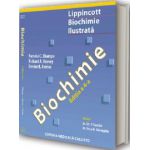

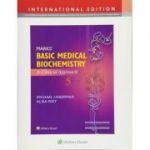






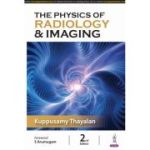

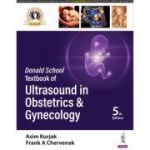
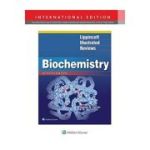
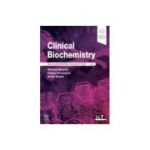


OUR VISITORS OPINIONS